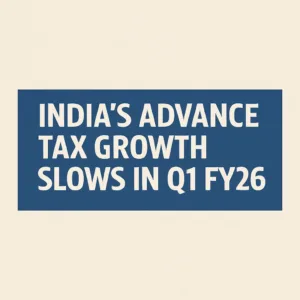S&P Global Ratings has suggested that recent regulatory measures taken by the Reserve Bank of India (RBI) could lead to a slowdown in credit growth for both banks and non-banking financial companies (NBFCs). The agency highlighted that the central bank’s decision to increase risk weights on unsecured personal loans and loans given to finance companies aims to reduce credit growth and minimize the interlinkages between banks and NBFCs.
According to S&P Global, these regulatory moves are expected to have a significant impact on the credit growth of NBFCs, with growth forecast to drop to 18% in the current fiscal year, down from 20% in the previous year. This slowdown is attributed to the new RBI guidelines. However, under normal conditions, NBFCs are expected to grow at a rate of 14%, maintaining stronger loan growth compared to the banking sector.
On the other hand, S&P Global noted that Indian banks’ more stringent underwriting practices, which focus on low-risk customers, are expected to enhance asset quality. However, this could also lead to a reduction in loan approval rates. Despite this, the overall outlook remains positive for the long-term sustainability of the sector.
The rating agency also predicts that the retail loan segment for both banks and NBFCs is likely to triple by 2030, with household leverage projected to rise from 23% in 2024 to 34% by 2030-31. This increase is partly driven by rising demand for retail credit.
S&P Global credit analyst Geeta Chugh commented, “We expect the RBI’s recent actions to rein in the aggressive lending by financial institutions while also offering better protection for borrowers.”
It is worth noting that upper-tier finance companies generally maintain robust capital levels, which could support credit growth for up to two years, despite the regulatory challenges.
S&P Global’s India Growth Forecast Stands at 6.8%, Rate Cut Expected
In addition to its commentary on credit growth, S&P Global has reaffirmed its forecast for India’s GDP growth at 6.8% for the current fiscal year, despite a slowdown in urban demand caused by high interest rates. The agency expects the Reserve Bank of India to begin cutting interest rates as early as October, following a 50 basis point rate cut by the U.S. Federal Reserve.
For the fiscal year 2025-26, S&P Global has retained its GDP growth estimate of 6.9%, driven by a steady recovery in India’s macroeconomic fundamentals, such as rural demand, consumption, and investment.
The agency also pointed out that the Indian government remains focused on fiscal consolidation and infrastructure development. The Union Budget presented in July has earmarked ₹11.11 lakh crore for capital expenditure in the fiscal year ending March 2025.
RBI’s Concern Over Food Inflation
S&P Global noted that the RBI views rising food inflation as a key hurdle to cutting interest rates. Containing headline inflation at the central bank’s target of 4% will be challenging unless there is a sustained decline in food price inflation. The agency expects inflation to average 4.5% for the fiscal year.
The upcoming Monetary Policy Committee (MPC) meeting, scheduled for October 7-9, will be closely watched for any rate changes. Since February 2023, the RBI has held its benchmark interest rate steady at 6.5% to keep inflation within the government-mandated target of 4%, with a tolerance band of +/- 2%.
Given the recent developments in the U.S., where the Federal Reserve cut its benchmark rate by 50 basis points, market analysts anticipate that the RBI may opt for a 25 basis point rate cut in the next policy review.
Conclusion
The RBI’s regulatory measures are expected to curb aggressive lending by banks and NBFCs, particularly in the unsecured loan segment. While this could slow down credit growth, it will likely improve asset quality and provide better protection for borrowers. Additionally, S&P Global maintains a positive outlook for India’s GDP growth, supported by the government’s focus on fiscal consolidation and infrastructure development. The potential for an interest rate cut in the near term could further bolster the economic recovery, but rising food inflation remains a key concern.
Bringing you the latest updates on finance, economies, stocks, bonds, and more. Stay informed with timely insights.















Be First to Comment